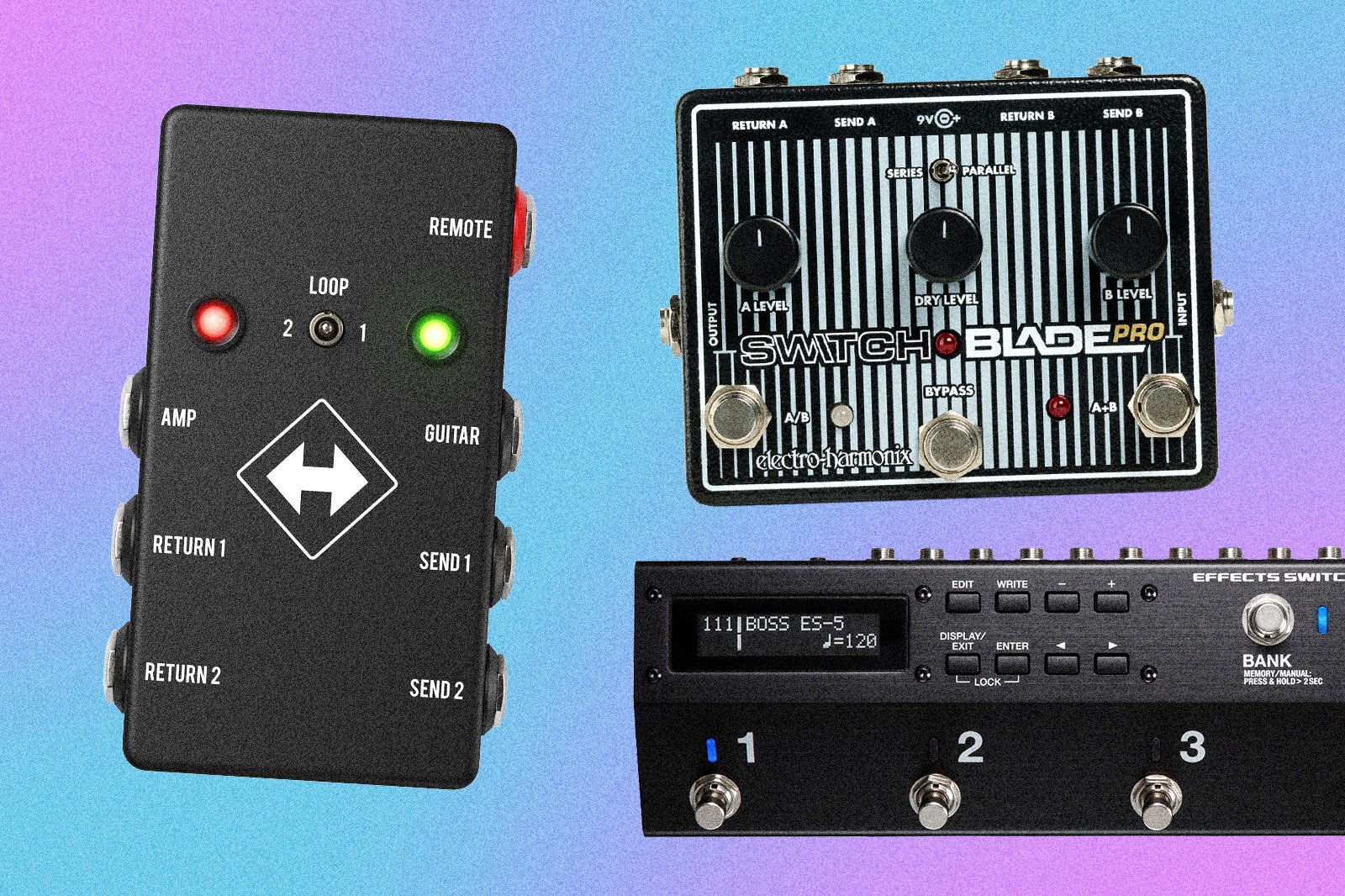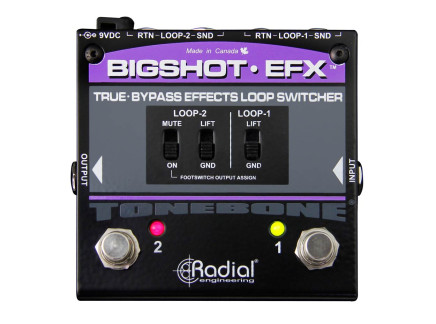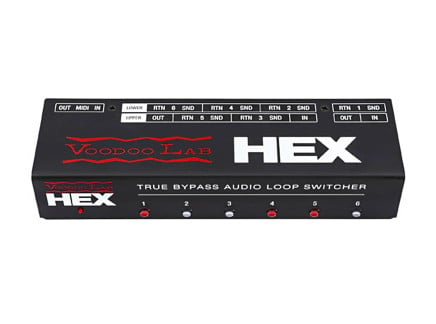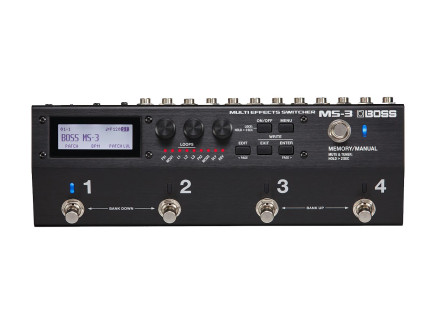Not to be confused with looper pedals, loop switchers offer a streamlined way to route all effects through a centralized switching system that makes engaging and disengaging effects easier.
They offer a lot of different features and make a great addition to any guitar player’s rig, so let’s dive in to what loop switchers are, their advantages and benefits, and how to choose the best model for your guitar rig.
What is a Loop Switcher Pedal?
Think of a loop switcher as a hub for the signal flow of your effects pedals. All of them are routed to the inputs and outputs of the loop switcher. Every pedal is kept active, and you engage the different effects through the bypass switches of the loop switcher.
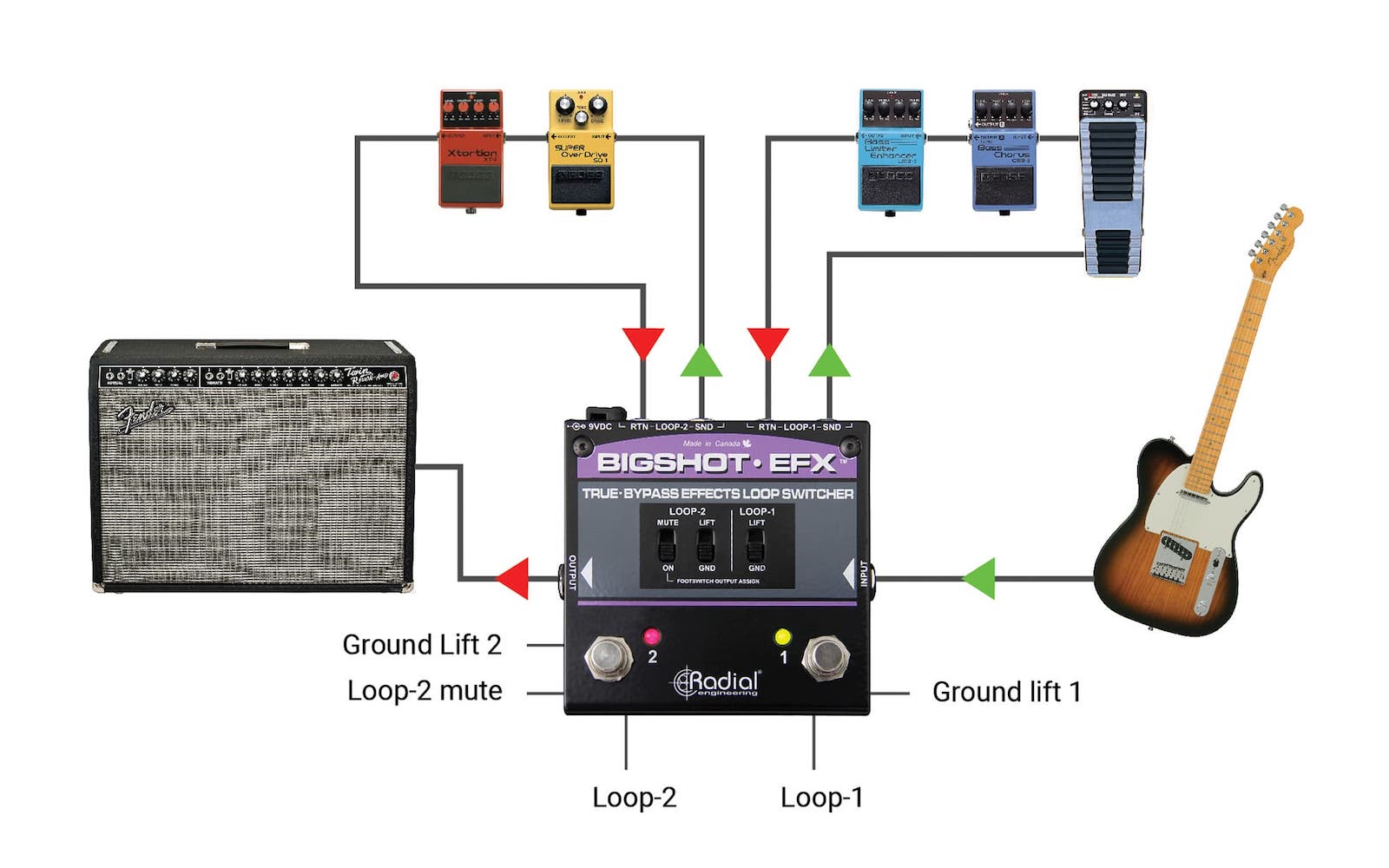
[Above: a rudimentary example of how a loop switcher pedal can work, featuring the Radial Engineering BigShot EFX—image via Radial's website.]
Depending on the size of your board, this makes switching to different effects combinations easier and more ergonomic, because all of the bypass switches are in a single, accessible row.
Most musicians think of loop switchers in the context of guitar or bass, but they’re useful on other instrument sources too, like vocals. The Radial Engineering Voco-Loco, for instance, has instrument and balanced inputs that can be used in a vocal chain. It even has an onboard mic preamp.
The Benefits of a Loop Switcher Pedal
As guitarists’ pedalboards expand, engaging and disengaging various effects can become unwieldy. Have you ever seen a guitar player on stage that looks like they’re doing some sort of frantic dancing while staring directly at their floor effects?
Whether you have a large effects pedal setup or something more minimal, loop switchers provide a lot of different advantages and benefits. So, let’s explore them!
Streamlined Pedalboard Setup
In general, guitar players design their pedalboard layout logically, both visually and in terms of signal flow. Loop switcher pedals let you situate effects pedals without having to necessarily worry about where they are physically located on the board.
This is especially beneficial considering the wide variety of stompbox sizes. Mini pedals can be especially hard to engage when they're crammed into any space they can fit—especially true when they are located near other effects.
Reduced Clutter
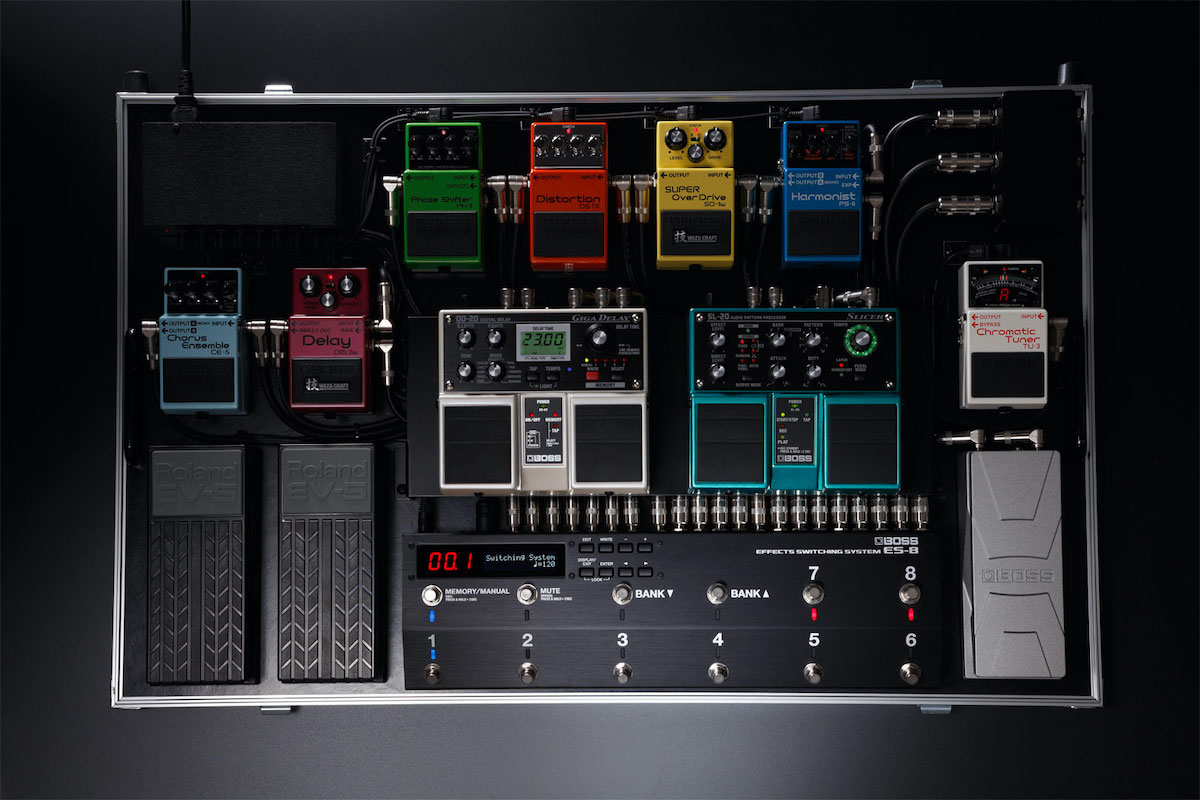
[Above: a streamlined, all-BOSS setup, courtesy of the ES-8 Effects Pedal Switching System.]
Speaking of streamlining pedalboard setups, loop switcher pedals promote better cable management by routing everything through a central hub. This means you don’t have to throw together different lengths of patch cables anymore. But it does mean you’ll have to do some measurements and choose your cable lengths accordingly if you want to keep things as clean and organized as possible.
Presets and Recall
One of the primary reasons guitar players opt for using a loop switcher is because of the preset and patch options that advanced models offer to recall various combinations of effects. Depending on how robust your pedal setup is, this opens up an immense amount of tonal options.
Not all loop switchers offer this feature, but it’s one of their biggest selling points. More sophisticated models aren’t restricted to the amount of loops they have, either. There might be eight sends and returns, but this doesn’t mean you’re limited to only eight patches. Through banks you can open up your preset options, create different patches for different parts or entire songs and setlists.
Using presets also allows for more seamless transitions while performing because engaging multiple pedals can now be done with a single stomp on the looper’s channel switch.

MIDI Integration
MIDI integration is one of the most powerful features you can find on higher-end advanced loop switchers. It gives you a more advanced level of control over your guitar rig. Through it you can control additional parameters and functions by communicating with them through the MIDI standard.
It’s not just about loop changes either. You can activate and deactivate effects, use program change messages to adjust presets, and make switching between different pedal configurations a lot easier.
What’s more, if you have any pedals in your setup that also have MIDI I/O, you could use Control Change messages to do things like change settings, adjust volume levels, or sync tempo to effects like delays and reverbs. You can also use a MIDI-enabled loop switcher to do automatic preset changes.
Adding a MIDI-enabled loop switcher to your guitar rig will take some time to get setup, but the advantages they offer make it worth it.
No Tone Suck
Pedals can introduce unwanted tonal characteristics like capacitance ("tone suck") to your signal chain regardless of the type of bypass method that’s built into them. By using a loop switcher, you can eliminate this by removing them from the signal chain when they’re not being used.
A lot of loop switchers come with onboard buffers that you can turn on and off. The Electro-Harmonix Tri Parallel Mixer, a particularly interesting audio routing pedal, even offers a phase control to make sure that the default polarity doesn’t sully the sound of whatever is routed through it.
Choosing the Best Loop Switcher for You
Loop switchers range from small, simple models like the Loop Switchers 4 Channel and the Radial Engineering BigShot EFX—which offer just a few channels of switching—all the way to options like the Voodoo Labs HEX, with next-gen features like patches/presets and MIDI integration.
Size
Since the loop switcher sits on your pedalboard with the other pedals, you have to factor in size and spacing concerns. They can take up a good amount of space, especially the models that have a larger loop count.
And then there are models built into standard pedal enclosure sizes that don’t take up much space at all, like the JHS Switchback, which offers A/B switching options. Some even go all the way up to 1U rackmount versions, like the Voodoo Lab GCX.
But it’s not just the size of the loop switcher itself you have to keep in mind—you also have to consider cabling lengths and angles. You’ll have to assess the needs for your setup, take some measurements, and work within your budget and size limitations.
Number of Loops
The number of loops is one of the biggest factors in choosing the right loop switcher. If you’re the kind of guitar player that’s constantly swapping pedals in and out of the chain, or you plan on expanding in the future, you'll probably want to explore options that can accommodate that.
Presets and Patches
Not everyone needs this feature, but it definitely comes with its advantages. It lets you experiment with different settings and makes recording and performing much easier. No more tap dancing—and you can order all of your effects in a logical way.
I/O
The type of I/O a loop switcher offers is important too, especially if you’re using some effects in stereo. If elements of your rig can be controlled through MIDI, this can also be a game changer (as discussed previously).
Additional Features
You’d be surprised by the additional features that some manufacturers pack into their loop switcher pedals. The BOSS MS-3 Multi Effects Switcher offers more than 100 built-in effects, a tuner, noise suppressor, and EQ.
These aren’t necessities, but they can also help you trim down your chosen effects if pedalboard space is limited or you just want to simplify things as much as possible.
Conclusion
Using a loop switcher pedal offers a lot of advantages and benefits. They allow you to streamline your pedalboard setup so that everything is located in a way that’s easy to access instead of dancing all over the place.
They help reduce cabling clutter and offer ways to assign specific pedal combinations to presets and banks, so you can access any number of different effects in a single switch. If MIDI integration is a part of your rig design, they let you change settings easily in the moment.
So if you’re a guitar player that has been looking to make life easier without necessarily having to minimize your rig, they offer a good compromise.
Check out Perfect Circuit's full selection of effect pedal audio routing tools!
Brandon Stoner is a lifelong musician and audio engineer who owns more guitars than anyone needs. As a lover of all things writing and music technology, he crafts every piece with his dog Max on his lap.

